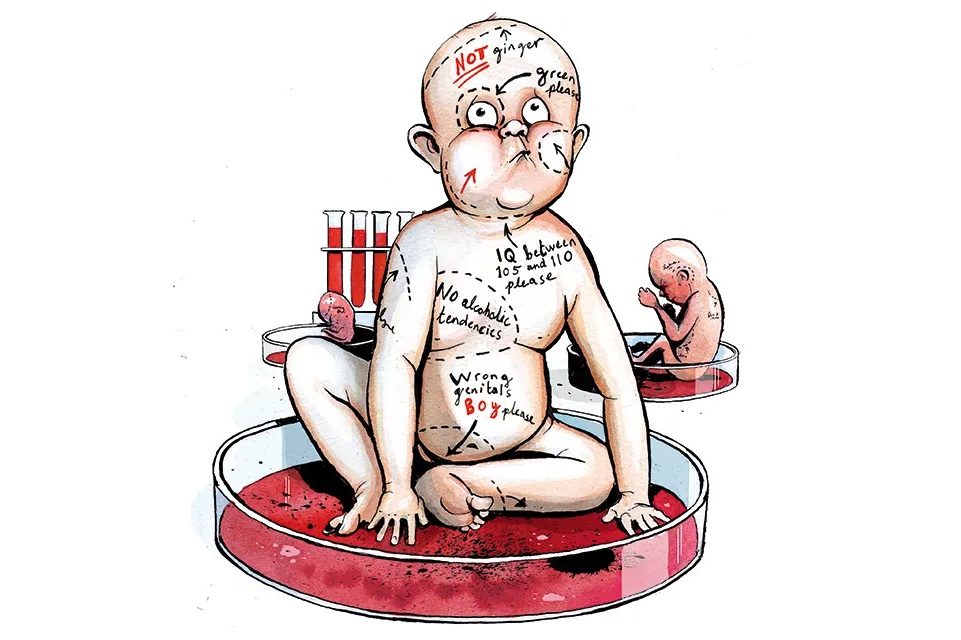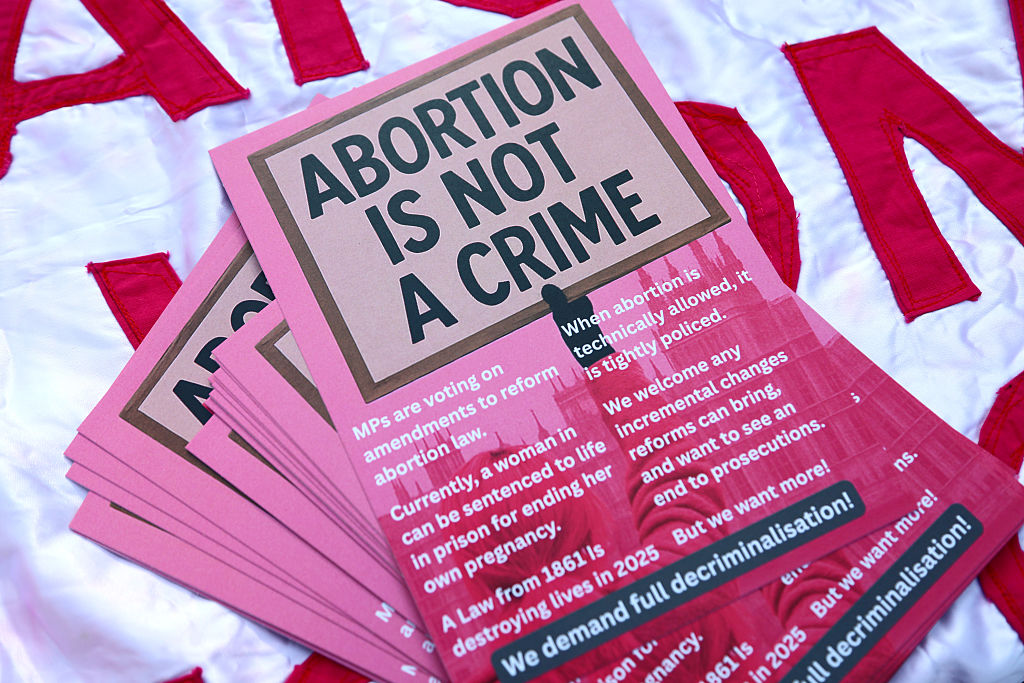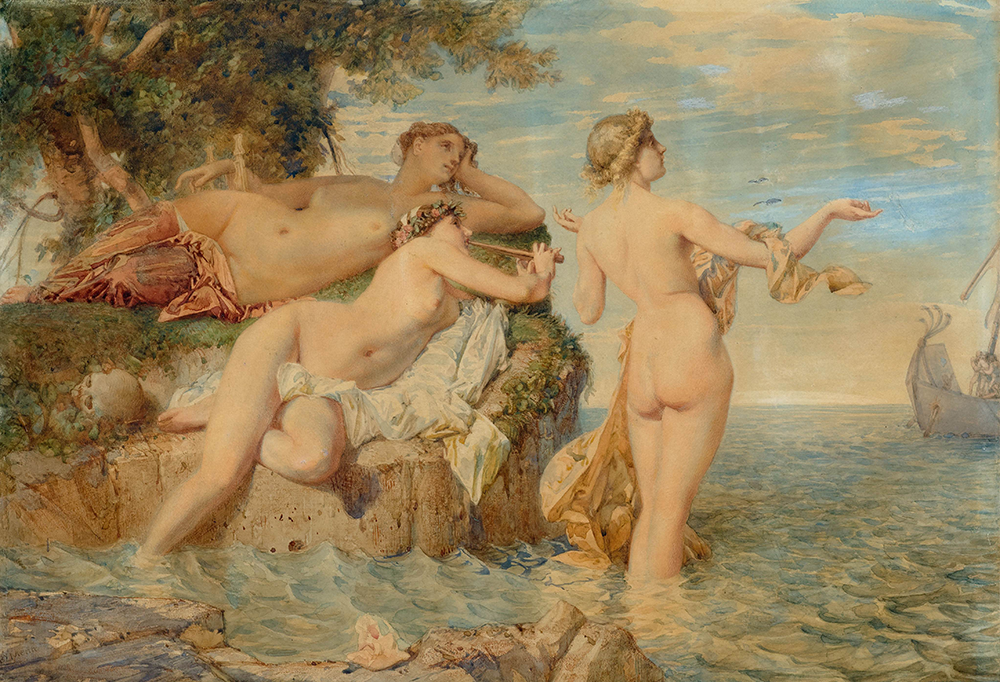Here follows a non-exhaustive list of my genetic flaws. I am short-sighted, more so as I age. I have bunions, dodgy knees and even dodgier shoulders. I have asthma. My skin blisters easily. My hair started going gray when I was in my late teens. I have zero talent for foreign languages, running or music. I am prone to nightmares, as well as to depression and anxiety.
Relatively mild flaws, as they go. But still, these aren’t traits I’m eager to pass on. Our three-year-old already shows a tendency for nightmares that sometimes makes me wince with guilt. Not that it’s my fault, of course. We don’t get to choose which of our genes we pass on. Every conception is a roll of the dice.
The technology will be described with euphemisms such as ‘genetic enhancement’ or ‘genetic health’
But soon that will no longer be true. In fact, it’s already not quite true, at least for those who have the means and determination to load the dice. Emerging technology is about to present parents with a set of ethical questions that make the usual kinds of debates — breast milk or formula? Nanny or daycare? — seem trivial. We have always had the power (more or less) to control our children’s nurture. Before long — perhaps in just a few years — any parent who can afford to will have control over the minutest details of a child’s nature too.
The crucial change set to turn our lives upside-down is called “preimplantation genetic testing for polygenic disorders” (PGT-P), hereafter “polygenic screening.” Testing a fetus or embryo for some conditions is now a routine part of the modern pregnancy experience. Prenatal Down’s Syndrome tests, for instance, are so widespread that in some Scandinavian countries almost 100 percent of women choose to abort a fetus diagnosed with the condition, or — if using IVF — not implant the affected embryo. The result is a visible change to these populations: there are simply no more people with Down’s to be seen on the streets of Iceland and Denmark.
Until now, these prenatal tests have been available only for some conditions. What’s revolutionary about polygenic screening is that it allows parents to take a batch of embryos conceived through IVF, have a report compiled for each one, based on their genetic risk factors, and then use these reports to decide which embryo to implant.
Such reports give a very full picture of the adult that embryo could become, including their vulnerability to an enormous number of diseases — heart disease, diabetes, cancer — and their likely physical and psychological traits: height, hair color, athletic ability, conscientiousness, altruism, intelligence.
The list is long and ethically fraught. Polygenic screening permits parents to choose the very best children, according to their own preferences, almost entirely removing the role of luck in the normal genetic lottery.
Should we welcome a new kind of commercial product that will allow some people — mostly rich ones — to have healthier, happier and cleverer children? And should you — the reader — seek out such a product for yourself? Should I?
It’s a live question. I’m currently pregnant with our second baby — conceived the old fashioned way — but we want to have more children. And I know enough people in the world of biotech to gain access to this novel service, which is not, at present, advertised as a single package, but must be procured via at least two different companies: one for the IVF, one for the polygenic screening. The screening itself is expensive, but not prohibitively so — probably in the region of $9,000-$15,000, which is around less than a year of full-time daycare. Equally expensive, and far more physically onerous for the mother, is the IVF process, which my husband and I would otherwise have no reason to pursue.
But think of what’s on offer: the opportunity to offer your children the best possible chance in life. Why would the kind of upper-middle-class parents who think nothing of spending vast sums on their children’s education not opt for polygenic screening? My bet is that they pwill, and soon.
If the word “eugenics” has sprung to mind while reading this, you’re not alone. What we’re talking about here can best be understood as a new kind of eugenics — one likely to be quite different from the first eugenics movement that emerged in the West at the end of the nineteenth century.
For one thing, the new eugenics will be far more scientifically sophisticated. The earliest eugenicists did not know that the gene was the basic unit of heredity, since the term was not coined until 1909. They talked instead of “gemmules” and “pangens.” And they assumed that some traits — such as homosexuality — were far more heritable than they really are. The first eugenicists made many factual errors, as well as moral ones.
But while “eugenics” may be a dirty word in the twenty first century, the fundamental claim behind the first eugenics movement nevertheless remains true. Victorian and Edwardian scientists were correct to notice that our genetic inheritance affects — often to a large degree — not only our physical but also our psychological characteristics. It is therefore possible to manipulate the characteristics of a population by encouraging or discouraging the reproduction of some genes — which historically meant, in practice, the reproduction of some people.
“It’s one thing to deplore eugenics on ideological, political, moral grounds,” as the evolutionary biologist Richard Dawkins tweeted in 2020. “It’s quite another to conclude that it wouldn’t work in practice. Of course it would. It works for cows, horses, pigs, dogs & roses. Why on earth wouldn’t it work for humans? Facts ignore ideology.”
“This is racist trash, Richard,” replied Dan Hicks, professor of archaeology at Oxford University, putting ideology before facts, and highlighting the key contemporary objection to the use of the word “eugenics” (if not, as we shall see later, the actual practice of it).
Critics such as Hicks are wrong to suggest that eugenics, as Dawkins phrased it, “wouldn’t work.” Evolution can occur quite quickly, given the right conditions. Mutations that provide protection against malaria have been strongly selected for over the past few centuries in parts of the world where the disease is endemic. In the West, the invention of the caesarean section in the eighteenth century removed the selection pressure that historically restricted the size of the human head, meaning that heads are growing larger. These are not examples of artificial selection — that is, humans consciously selecting particular features — but they nevertheless demonstrate the speed and power of the evolutionary process upon which eugenics relies.
Which is not to say, of course, that it all comes down to genes. On the ancient question of “nature or nurture?,” by far the most defensible scientific answer is “both.” But while it is rare to come across anyone who insists that environment plays no role whatsoever in the development of physical and psychological traits, it is common to find people on the left who reject the role of nature altogether, insisting that humans are born as blank slates.
There are two motivations behind this ideological stance. The first is utopian: if you support any kind of revolutionary political project — egalitarianism, say — then you need to believe humans could, given the right conditions, radically overhaul their instinctive behavior and desires. For revolutionaries, the idea of a fixed human nature presents a hateful obstacle to their political ambitions (“good ideology; wrong species” as E.O. Wilson said of communism, a political system that he declared might work well for ants, but is reliably disastrous for Homo sapiens).
The second motivation comes from a well-meaning urge to reject eugenics on moral grounds. The horror most modern people feel when they hear the word is justified by the atrocities associated with the first movement. The extermination programs of the Nazis, for example, were directly inspired by the eugenics movement of the Anglosphere, not least the programs permitted by American eugenic legislation that saw more than 64,000 individuals forcibly sterilized between 1907 and 1963, disproportionately African-American and indigenous women. The procedure was known in medical slang as a “Mississippi appendectomy.”
The instinct to condemn as “racist trash” even a partial defense of the science of eugenics is rooted in the recognition that this science has, within living memory, been used to justify many evil deeds. And this is a question that any defender of the new eugenics must provide an answer to: is that process inevitable? Does a widespread belief that some genes are better or worse than others lead to the widespread conclusion that some people are better or worse than others? And does this conclusion always lead to some very dark places?
We are about to find out. The new eugenics will shortly be with us, although it will not describe itself as such. It will be described with euphemisms such as “genetic enhancement” or “genetic health.”
Unlike the first eugenics movement, which attempted to harness the power of the state to determine who should and should not be encouraged (or forbidden) to reproduce, the new version will not concern itself especially with government policy. Rather, it will mostly take the form of private individuals quietly opting for new commercial services like polygenic screening — and, in the future, more radical biotech. These individuals will typically spend large sums of money on these services because they will have reached the conclusion that socially desirable traits such as intelligence and beauty are heavily influenced by genetics.
Some countries may well subsidize polygenic screening. Israel already offers its citizens free IVF services and China has recently announced its intention to do the same. Laws that permit or incentivize the use of these biotech services can accurately be described as eugenic laws, albeit not ones written with the intention of manipulating the gene pool at scale
My prediction is that the new eugenics will be just as popular as the first — which is to say, very. What is often forgotten about the first eugenics movement is how extraordinarily influential it was in its day, particularly among the self-defined “progressive” upper-middle classes of America.
The best contemporary comparison is perhaps the environmentalist movement, which has also achieved rapid mainstreaming within a few decades. Like environmentalism, eugenics was endorsed by the most prestigious scientific associations and journals. Like environmentalism, it found passionate advocates among celebrities and the socially conscious middle classes. It wasn’t popular only among WASP conservatives. Black progressives Kelly Miller and W.E.B. Dubois were eugenicists, for example, as were some of the leading socialists of the day. For the Fabian reformer Sidney Webb, the first eugenics movement combined perfectly with his famous injunction to “Interfere! Interfere! Interfere!” Moulding a healthier and more intelligent population was regarded as not just a virtuous cause, but a duty.
One technology the first eugenicists made use of was abortion. Margaret Sanger, the founder of Planned Parenthood, was a prominent eugenicist, as was Marie Stopes, her British counterpart, who gave her name to Marie Stopes International (MSI), one of the world’s foremost providers of abortion services to this day. So great was Stopes’s eugenics fervor that in 1947 she forbade her son from marrying a beautiful heiress because the woman was short-sighted. After he went ahead anyway, Stopes cut him out of her will.
When criticism of eugenics came, it was mainly from Catholics, in part because most eugenicists vigorously endorsed the use of both birth control and abortion to further their goals. G.K. Chesterton was perhaps the best-known opponent of the movement. He once wrote a comic story about a woman (strongly reminiscent of Stopes) who breaks off an engagement after her fiancé falls off his bicycle, since this revealed his genetic feebleness. He condemned eugenics as “a thing no more to be bargained about than poisoning.”
But such objections were rare before World War Two. And even after Nazi atrocities were made known, it took some decades for the word “eugenics” to fall entirely out of favor (the American Eugenics Society did not change its name until 1973).
Yet while the term is now stigmatized, plenty of eugenic laws and practices remain popular. In a recent essay titled “You’re Probably a Eugenicist,” the evolutionary psychologist Diana Fleischman points out that the efforts of the non-profit organization Dor Yeshorim to reduce the incidence of Tay-Sachs disease and cystic fibrosis in Jewish families could accurately be described as eugenicist. The practice of aborting fetuses likely to be affected by Down’s Syndrome is also eugenicist. Laws forbidding sibling or cousin marriage are definitely eugenicist, in that they are motivated by a desire to reduce the incidence of disease caused by inbreeding. And what’s more, as Fleischman writes: “Gay men and lesbian women in the US often use gamete donors from egg and sperm banks to have kids in a process that is transparently eugenic…Organizations that recruit egg and sperm donors don’t just recruit for fertility, they also screen for mental and physical health, height, education and criminal history — because that’s what their clients want and expect.”
It is common to find people on the left who reject the role of nature altogether
The current bien-pensant position on eugenics is to talk the talk on opposing it, without walking the walk. The increasing availability of polygenic screening is likely to make that dissonance more obvious.
Jonathan Anomaly is one of the few philosophers thinking seriously about the ethical implications. In his 2020 book, Creating Future People, he explored the many practical and moral problems that might result from widespread use of polygenic screening, including the risk of what evolutionary biologists call “speciation;” that is, a group becoming so genetically distinct from the rest of its species that the two populations are no longer genetically similar enough to interbreed. Strange as this may sound, the run-away use of polygenic screening by an elite group could result in just such an outcome. The social and political differences between the two human species would then become so enormous that the fracturing of polities would be likely, with genetically enhanced people eventually forming their own nation states that exclude the non-enhanced.
Personally, I share the nervousness that many feel in response to the “unnaturalness” of polygenic screening. But it is worth remembering how “unnatural” our modern lives already are — not least the artificially low levels of child mortality we nowenjoy. For most of our species’ history, something in the region of 40-50 percent of children would die before their fifteenth birthdays. Now, the rate globally is at about 4 percent and much lower in the rich world.
This is an enormous blessing. It also ensures that people who in other eras would have died as children — perhaps including me, as a fairly sickly asthmatic — are now able to pass on the genes that make them vulnerable to premature disease and death. This so-called “crumbling genome” problem means that without the use of genetic enhancement technology of some kind, we will become steadily more genetically sick as a species: childhood cancers will become more common, our immune systems will become weaker and we will become steadily more reliant on modern medical technology to allow us to weather threats. If for any reason those medical systems fail, it’s game over.
The only “natural” way out of this quandary is to return to historically normal child mortality rates — a possibility that strikes terror into my parental heart. The truth is that any parent grateful for “unnatural” technologies such as vaccines and effective treatments for childhood cancer should also be open to the prospect of using other “unnatural” technologies such as polygenic screening.
Parents have historically moved heaven and earth to protect the health and happiness of their children. We should expect those of the future to do the same. And very soon they will have another tool at their disposal: a radical and potentially dangerous tool, but one that any parent with the means to acquire it will almost certainly be unable to resist.
Watch Louise Perry and Mary Harrington discuss more on Spectator TV:
This article was originally published in The Spectator’s UK magazine. Subscribe to the World edition here.


























Leave a Reply